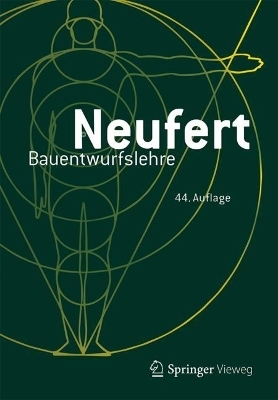
Green BIM
Sybex Inc.,U.S. (Verlag)
978-0-470-23960-5 (ISBN)
Eddy Krygiel, AIA, LEED AP is a practicing architect at BNIM Architects, which has four projects that have received AIA COTE Top Ten Green Project Awards. Eddy is responsible for implementing BIM at BNIM and also consults for other firms looking to implement BIM. He also teaches Revit to practicing architects and architectural students and has lectured around the nation on the use of BIM in the construction industry. Eddy has co-authored papers and books on BIM and sustainability as well as several books on using Autodesk Revit Architecture. Bradley Nies, AIA, LEED AP, is a registered architect and Director of Elements, the sustainable design consulting division of BNIM Architects. Brad has worked on all levels of U.S. Green Building Council LEED-Certified projects, including two that achieved Platinum certification.
Forword xiii
Introduction xvii
Chapter 1 Introducing Green 1
Sustainability 2
A Brief History of Sustainable Design 2
Recent Trends Toward Sustainable Design 6
Defining Sustainable Design 9
Why Is Sustainable Design Important? 13
Green Building Rating Systems 16
Living Buildings: The Near Future of Sustainable Design 23
Chapter 2 Building Information Modeling 25
What Is BIM? 26
Why Is BIM Important? 29
Understanding BIM 32
Basic Benefits of BIM 34
A Change in Method and Approach 35
Beyond Documentation 38
Migrating to BIM 43
BIM as a Workflow 46
Lewis and Clark State Office Building 47
Ranges of BIM 51
Chapter 3 Integrated Design Teams 53
The Shift in Responsibility 54
Why an Integrated Design 55
The Team Members 58
The Designers 58
The Owner 59
The Contractor 60
The Community 60
Collaboration, Commitment, and Passion 60
Collaboration 61
Owner Commitment 63
Project Team Passion 64
Facilitating Integration in Process 64
Design Phase Workshops 65
Predesign 65
Schematic Design 66
Design Development 66
Construction Delivery Method 67
Design-Bid-Build 67
Negotiated Guaranteed Maximum Price 69
Design-Build 71
Is One Construction Delivery Method the Best? 73
Moving Forward 73
Chapter 4 Methodology For Sustainable Solutions 75
Order of Operations 76
Understanding Climate, Culture, and Place 76
Understanding the Building Type 91
Reducing the Resource Consumption Need 96
Using Free/Local Resources and Natural Systems 103
Using Efficient Man-made Systems 115
Applying Renewable Energy Generation Systems 121
Offsetting Your Negative Impacts 124
Chapter 5 Sustainable BIM: Building Form 127
Getting Started 128
Building Orientation 131
Understanding the Impacts of Climate 132
Reducing Resource Need 134
Setting Project Goals 135
Using BIM for Building Orientation: Finding Solar South 136
Building Massing 139
Understanding the Impact of Climate, Culture, and Place 141
Reducing Resource Need 143
Using BIM for Building Massing 143
Analyzing Building Form 147
Optimizing the Building Envelope 148
Daylighting 151
Understanding the Impacts of Climate, Culture, and Place 157
Setting Project Goals 157
Using BIM for Daylighting 159
Chapter 6 Sustainable BIM: Building Systems 165
Water Harvesting 166
Understanding the Impacts of Climate 167
Reducing Water Need 167
Defining a Baseline and Setting Goals 168
Using BIM for Water Harvesting 169
Analyzing Water Harvesting 177
Optimizing Water Harvesting 178
Energy Modeling 178
Understanding the Impacts of Climate 180
Reducing Energy Needs 180
Energy Use Baseline and Setting Project Goals 181
Using BIM for Energy Analysis 184
Using Renewable Energy 193
Understanding the Impacts of Climate and Place 193
Reducing Energy Needs 195
Using BIM for Renewable Energy 196
Analyzing Renewable Energy 198
Optimizing a Solar Array 200
Using Sustainable Materials 200
Understanding the Impacts of Climate, Culture, and Place 201
Reducing Material Needs 203
Setting a Baseline 204
Using BIM for Sustainable Materials 204
Chapter 7 The future of BIM and Sustainable Design 209
Moving Forward with BIM 210
Using BIM as a Tool for Integration 211
A Fundamental Tenet of True Sustainability 211
Moving Forward with Sustainable Design 213
Leading by Example 213
Funding Green Design 218
Opportunities for Change 219
Index 227
| Erscheint lt. Verlag | 24.4.2008 |
|---|---|
| Vorwort | Steve McDowell |
| Verlagsort | New York |
| Sprache | englisch |
| Maße | 188 x 234 mm |
| Gewicht | 435 g |
| Themenwelt | Technik ► Architektur |
| ISBN-10 | 0-470-23960-3 / 0470239603 |
| ISBN-13 | 978-0-470-23960-5 / 9780470239605 |
| Zustand | Neuware |
| Haben Sie eine Frage zum Produkt? |
aus dem Bereich


